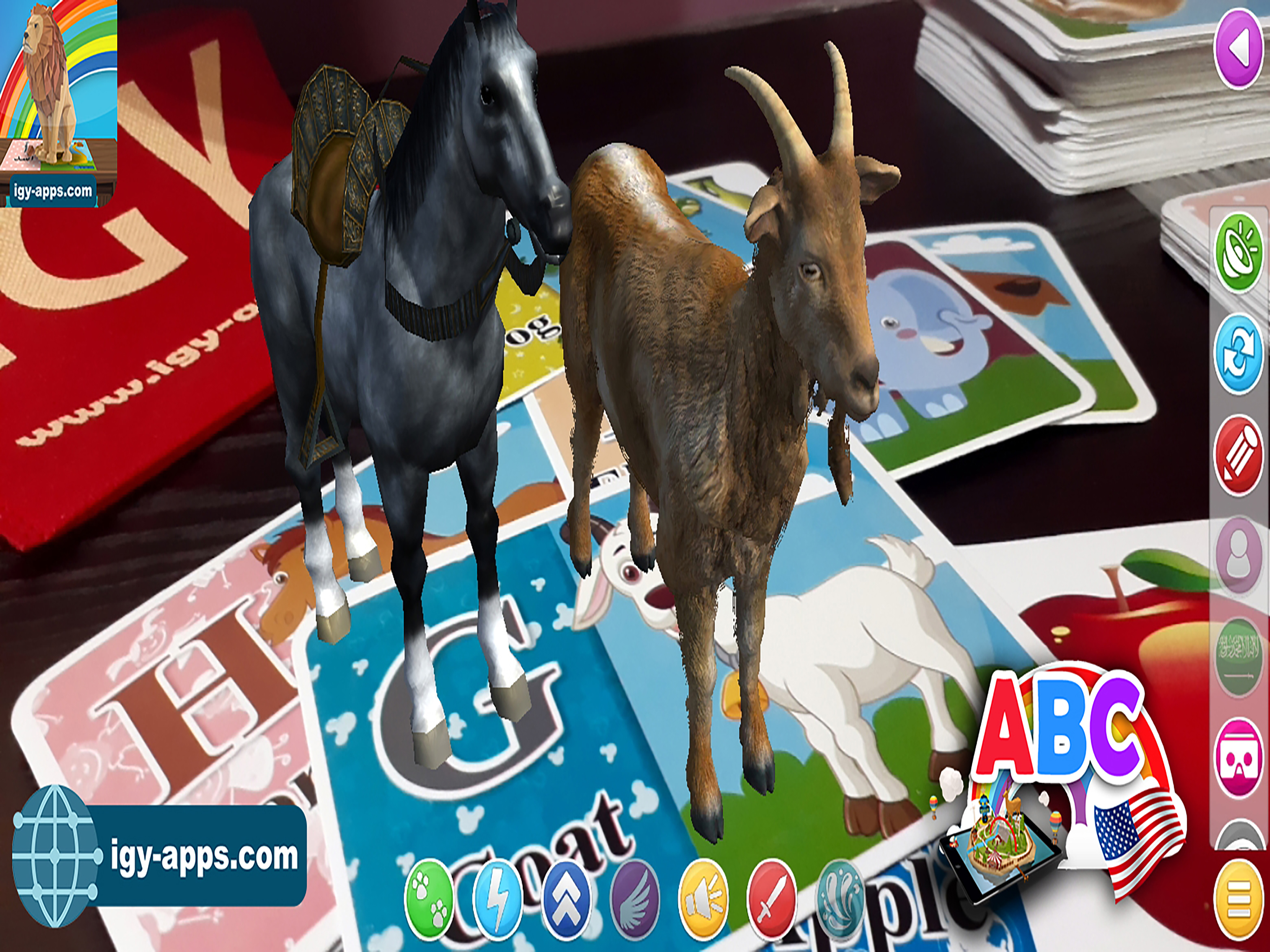Ratings & Reviews performance provides an overview of what users think of your app. Here are the key metrics to help you identify how your app is rated by users and how successful is your review management strategy.
The AR Briefcase includes seven main sections in addition to the augmented reality T-shirt, The AR Briefcase application supports both virtual reality technology and augmented reality technology, and it can also work with both virtual reality glasses and virtual reality remote. 1-Arabic, English and French letters: 3D models appear when the user points with the camera to the Alphabet Card. The user can control the three-dimensional 3D models, for example: the user can make the lion "A 3D character for letter L" run or jump Or makes the dog "A 3D character for letter D" walk or swim. Thus, in the rest of the letters, each of the letters "Arabic, English or French" There is a 3D object that can be fully controlled by the user. The user can also take pictures with the camera through the camera icon inside the application. The user can also control the size of the 3D object using two fingers on the phone screen. The program also teaches the user how to write the letters "Arabic, English and French" in the right way. The application also pronounces the letters "Arabic, English and French" and the name of the character and hears sound effects according to the 3D object displayed. 2 - Numbers (Arabic and English): 3D models appear when the user points with the camera to the Number Card. The count of the 3D objects is shown upon the count of images on the card with pronunciation. For the Addition operation, show 2 cards in front of the camera. The program also teaches the user to write the numbers "Arabic and English" in the right way and through the writing in the application. The application also pronounces the number "Arabic and English" for the user. 3 - Solar System (Arabic and English): 3D models appear when the user points with the camera to the celestial bodies card. The celestial bodies appear in front of the child and the child can see the planets as they revolve around the sun, the Moons revolves around the planets and the rest of the celestial bodies. Information about the celestial bodies pronounces in both Arabic and English. The user can also control the size of the 3D object using two fingers on the phone screen. 4 - Dinosaurs Collections (Arabic and English): 3D models appear when the user points with the camera to the Dinosaurs card. The Dinosaur appears in front of the child and the user can see The animations of Dinosaurs in the real world. Information about the dinosaurs pronounces in both Arabic and English. The child can also control the size of the 3D object using two fingers on the phone screen. 5 - Anatomy Collections (Arabic and English): 3D models appear when the user points with the camera to the Anatomy card. The human organ parts appear in front of the user and the user can see the parts of the human organs in the real world. Information about the parts of the human organs pronounces in both Arabic and English. The user can also control the size of the 3D object using two fingers on the phone screen. Anatomy cards are divided into two parts: The first section is for children under the age of 10 and includes a group of models of the external organs of the human body, such as the nose, mouth and ear. The second section is for children aged 10+ years, includes a set of models of internal human body organs in addition to the complete human body systems. The human body T-shirt (Arabic and English): The child wears the augmented reality T-shirt and one of his friends holds the phone on which the application is installed, and 3D models of the human body appear, through which the child can see the organs of the human body and rotate around them.









